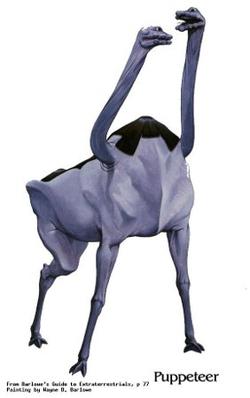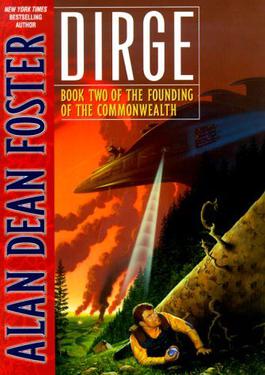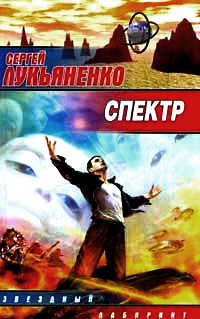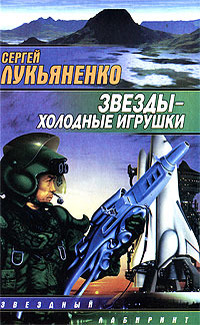Prehistory
In the beginning of the 21st century a group of scientists from MSU invented a jumper, a device allowing FTL travel. But distance of every jump is a constant — about 12.3 light years, so travelling requires high navigation skills and a good dose of luck. Additionally, all power is drained from active devices during a jump, and all active data carriers are wiped. Soon after, the scientists are hired by NASA and begin working on the prototype, converting a space shuttle into a jump-capable ship. During one of the first interstellar flights, the shuttle Enterprise encountered and was captured by an alien race...
So the Humankind joined a conglomerate of non-humanoid races, known as the Conclave. It is an utterly rational organization, and this may be seen as cruel. Races are divided into the Strong and the Weak — the Strong are ancient powerful civilizations and the real rulers of the Conclave. While the younger Weak races with restricted rights may overcome the Strong ones in some areas — so, Human starships with outdated engines are the fastest (species of other races are killed or driven mad during jumping, while for Humans it's pure ecstasy that rivals sex or drugs), military fleets of mouse-shaped race Alary are the most powerful, chameleon-shaped Counters perform calculations better than any computer, etc. — nevertheless, narrow specialization is a characteristic feature of Weak races — and the reason why the Conclave needs and uses them, while civilizations of no value are simply exterminated. This even applies to races that are of no threat to the Conclave.
Of course, there are Weak races malcontent with the status-quo — Humans, Alary, Counters, and Kualkua (symbiotic shapeshifters who can biologically merge with most other races). All are trapped in frames of their specializations — without any way out, as the political situation is stable.
Suddenly, things change.
Plot summary
During a usual trading flight Pyotr found a Counter on his craft who called himself Karel and, most importantly, made it through the jump unhurt (ironically, the alien accomplished this by going into a self-induced coma caused by division by zero). Standing orders require Pyotr to destroy the ship and all evidence of the alien's survival, as this would eliminate the Conclave's need in Humanity. The alien requested an informal meeting with Andrey Khrumov — Pyotr's grandfather, a known political scientist, a Russian patriot/nationalist and a great patriot of Humanity, biased against the Strong races.
A fleet of Alary has captured a small but extremely powerful scout spaceboat of an unknown civilization, which heavy damaged the Alary spaceships during the fight. Its pilot was killed, but without a doubt it was a human being. Studying the memory of the scout showed that another civilization had transferred its planetary system to a region of space close by, perhaps escaping a cataclysm. Strangely enough, they shaped their continents to resemble a perfect circle and square — so Andrey Khrumov called them Geometers.
The new civilization seems to be strong enough to take on the entire Conclave, as the single scout ship managed to wipe out two-thirds of one of the strongest Alary fleets before being tractored into the Alary flagship. This is a chance for Weak races to improve their positions... but also a threat for Earth, since the Strong races, if becoming aware of the Geometers, would destroy the humans to prevent its possible alliance with a biologically-identical race, stronger than the Strong races.
A conspiracy of four races decide to carry out a reconnaissance mission. Pyotr Khrumov agrees to enter a symbiosis with a Kualkua, who morphs him to appear as the dead pilot, gives him the language of Geometers, and temporarily erases his memory...
Societies
By struggling to find allies Pyotr will explore two worlds: the home planet of Geometers and the world of Star Shadow in the core of our Galaxy.
Conclave
A rational conglomerate of sentient races in our part of the galaxy. Long ago, the races of the Conclave were subdivided into the Strong and the Weak.
Known Strong Races
- Hiksi (or Hiksoids) are a race of mantis-like aliens. They are very tall by human standards (3 meters or 9'10") but fragile, indicating a low-gravity homeworld. A Hiksi can trip and easily break an appendage. They do, however, enjoy a much better eyesight than humans. The location of their eponymous homeworld is unknown. They have numerous colonies, including planets in the Sirius system. The Hiksi are a caste-based society, depending on which task an individual is more suited for, with the castes differentiated by skin pigmentation. When a new generation of Hiksi is ready to take over, the oldest generation commits a mass ritualistic suicide. Despite this custom, they are not that different from humans psychologically. For example, they have analogs to television, advertisements, circus, etc. Along with the Daenlo, the Hiksi are responsible for humanity.
- Daenlo appear as large rhinoceroses with tentacles on their faces. They have a powerful fleet. Responsible for humanity.
- Torpp are a unique race of non-biological organisms. They appear as small stars and appear to be composed of plasma encased in force fields. Their homeworld is a star. They are able to travel through space without ships.
- Jen'sh a race of engineers that appear as a cross between a bee and a monkey. It was previously thought that the Jen'sh were a Weak race.
Known Weak Races
- Humanity has joined the Conclave in the 2020s. There have not been measurable technological advances in that time. The exceptions are the jumper, holographic image projectors, and thermobaric weapons capable of destroying an aircraft carrier with one hit. Most governments have their own space programs. Nearly 20% of Earth population works is in some way working in a space-related industry. Certain facts are known from the books: Moscow is no longer the capital of Russia after a military junta has taken over the government; there have been armed conflicts in the Caucasus for nearly three decades; Russia and Ukraine fought over Crimea, after which the peninsula was recognized as an independent state.
- Counters are a non-biological race of living computers. They are capable of quickly and precisely working out any mathematical problem. The Counters consider the word "counter" to be an insult, but have not revealed their own name for their race. Their homeworld is a ringed gas giant. The counters see their life's purpose as the discovery of the original truth. The Counters appear as average-sized, grey, scaly reptiles. Their blue eyes glow in the dark. They possess two independent levels of consciousness: internal (works with information in terms of bytes) and external (similar to other races' consciousness). The Counters are capable of interfacing with any living or non-living electrical impulse-based systems, from the human brain to any electronic device.
- Alary a rodent-like race whose specialty is military. They are capable of moving either upright or on all fours. Even though their forward appendages are prehensile, all their weapons are carried on their heads and are operated with the tongue. Alary are gender-neutral until reaching the age of maturity, at which point it selects a gender and changes its fur from black to grey.
- Kualkua is a symbiotic, shapeshifting race. It is capable of merging with any organic being and transform it as desired. Known for complete disregard for death. All Kualkua are actually a part of a single being, spread out over multiple "bodies." After the Kualkua defied the will of the Conclave, their home planet was destroyed. Since then, the Kualkua will not talk to members of the Strong races but will do their bidding.
- Dusties are a worm-like race whose function used to be mining resources for the Strong races. They developed a set of ideas known as "absolute knowledge" in order to become a Strong race. However, the Conclave merely assigned the Dusties a new function - terraforming.
- Flickerings are responsible for maintaining the communication channels throughout the conclave.
- Unpronounceables are in the process of developing a universal set of morals and philosophies for all known races in order to equalize the status.
Geometers
This world is almost dreamlike. Possessing control over energy, friendship with other sensible races, order and love to all alive...
Lukyanenko polemizes with Strugatsky's World of the Noon. The society of Geometers is crucially based on Upbringing. No families. People are brought up in groups of four by Mentors, who help them to socialize and suppress "wrong" sides of their characters (without any violence, just refusing love). Mentors also help them to recognize the occupation, which is required by the Motherland and which they would like — but Mentors are sure in their right to choose. Mentors don't hesitate to ruin "wrong" dreams of their pupils and have no respect for their personal life. The result is far from World of the Noon, but a society of utter expediency, of people who are brought up averagely — i.e. they fulfil all rules of the society, but are almost unable to violate any (such behaviour is even considered as illness).
The core of this world conflicts with what Pyotr considers right — "you can violate laws of the society, but can't violate principles of the moral", "to be right is always an ordeal". Later Lukianenko supposes that the world of Geometers isn't free and really happy, due to both the hostile outer world and the kind inner world of the family are necessary to form a personality.
Geometers can't be an ally for the Earth, only a new host — Pyotr understands it. A loose quote: "From point of view of inhabitants of the Motherland we are absolutely wrong. And we'll be oppressed — so quietly and insensibly that won't even notice that. Cosmodromes will empty, factories will stop — for instance, in order to rescue the wrecked ecology. Then Geometer will help us with their Mentors — the best in the world. For example, to introduce future generations to high knowledge. Will apply their bioengineering, beating our diseases and superfluous emotionality as well. What's the need of fire of emotions for those who strives for Friendship? One may even kill without fury and rage. A couple of generations will pass, by the way, as the Conclave wanted. And the Earth will become the new Motherland for those, who will be unable to understand this word really."
Geometers' culture is a direct result of their history. Apparently, there were two intelligent lifeforms on the planet: the Geometers and those they called the Furry Ones (humanoids with fur covering their bodies). The Furry Ones were the more aggressive species and waged war on the Geometers. To fight them off, a Geometer doctor created a disease that completely wiped out the Furry Ones. The genocide horrified the Geometers, and they vowed to make any other race they encounter their friend (whether they want to or not). Some time later, a plague struck the Geometers but was cured when a doctor working with molds discovered antibiotics. The death toll was high, and the Geometer society was in disarray, allowing the Mentors to take full control and establish the "friend philosophy" as law. It has been suggested by some Geometer historians that the plague was engineered by the same doctor who stopped it at the behest of the Mentors, who were planning to use the disorder to take over. Such historians are silenced and placed in sanatoriums (i.e. prisons). Once space travel was discovered, the Geometers found two other intelligent species (non-humanoids this time) in their system. These were the first races on which their regression-progression methods were used and used successfully.
Geometers are highly advanced technologically. In some respects, they rival even the Conclave. Their advances are also dangerous to some Weak races, threatening their status within the Conclave. The powerful Alari fleets are nearly useless against the Geometer "unarmed" scoutships. Geometer A.I. technology would allow the Conclave to replace the Counters with much more obedient A.I.'s. Human monopoly on fast travel will end once the Conclave finds out that the Geometers use a combination of subspace drives and jumpers to rapidly travel vast interstellar distances without any ill (or ecstatic) effects.
Shadow
It's probably the most ancient world, settled mostly by beings biologically identical to Humans — but it includes non-humanoid races as well, as respected minorities.
Each planet of the Shadow is spotted by the grid of Gates — every person feels them; if you step into one, it will instantly transport you to the planet, satisfying your subconscious feelings the best. If you want a battle it will send you to a planet in war; if you want to study, a planet-university waits for you... Shadow allows you the absolute freedom and all possibilities to evolve — there's even no death: if you'll die, you'll be resurrected at the planet you want. But this turns out to be a severe ordeal for a person, revealing the ultimate truth about oneself. [1]
Technical progress has stopped at some level — but this level is probably higher than everything known. But "those who want to go further" go. After several deaths you'll get bored to remain a human, and Gates will remake you into some advanced energy living form, but what that experience feels really like remains a complete mystery to those who are still linked to their terrene, human body.
All what's needed to save the Earth is to plant the Seed of the Gates — and Humans'll join the Shadow, escaping outer threats. But the Seed will grow only if a person sincerely wants it. Maybe the world of the Shadow is really good, but Pyotr and his friends can't like it — they were in too unpleasant worlds on their way across planets of the Shadow. "A man can't be allowed to have such a freedom. One can't leave decisions to be made by a handful of garbage on the bottom of the subconsciousness. We 've learned — long ago — to act not as we want but as it's needed, and found our real freedom in it. Even in the inanimous slavery of Geometers there are more gaps for real freedom, than in the Shadow, a world of absolute permissiveness. Because to act exactly as you want is the real slavery." — somewhat debatable thoughts of Pyotr.

The Kzinti are an alien cat-like species developed by Larry Niven in his Known Space series.

Pierson's Puppeteers, often known just as Puppeteers, are a fictional alien race from American author Larry Niven's Known Space books. The race first appeared in Niven’s novella Neutron Star.
The concept of self-replicating spacecraft, as envisioned by mathematician John von Neumann, has been described by futurists and has been discussed across a wide breadth of hard science fiction novels and stories. Self-replicating probes are sometimes referred to as von Neumann probes. Self-replicating spacecraft would in some ways either mimic or echo the features of living organisms or viruses.

Battlelords of the Twenty-Third Century is a paper and pencil science fiction role-playing game designed by Lawrence R. Sims and first published in 1990. The game's newest tagline is Roleplaying in a Galaxy at War. The Battlelords of the Twenty-Third Century license was later sold by Optimus Design Systems (ODS) to SSDC, Inc. in September 1999. In 2017, SSDC granted exclusive rights to produce games set in the Battlelords Universe to 23rd Century Productions, LLC. Subsequently, 23rd Century Productions, LLC. launched a successful Kickstarter campaign to fund the Kickstarter Edition, also known as the Revised Edition, of Battlelords of the 23rd Century.
The Noon Universe is a fictional future setting for a number of hard science fiction novels written by Arkady and Boris Strugatsky. The universe is named after Noon: 22nd Century, chronologically the first novel from the series and referring to humanity reaching its noon in the 22nd century.

The mythology of the Stargate franchise is a complex and eclectic fictional backstory, which is presented as being historical, of the Stargate premise. A "rich mythology and world-building" are used to establish "a vast cosmology and an interesting alternate take on the history of Earth"; a defining feature is "its use of ancient mythology, with stories that take inspiration from multiple places around the globe". Narratives center around xeno-mythology as experienced by humans during episodic contact with alien races. Audiences across a variety of platforms - including TV series, novels, comics and movies - witness the people of Earth exploring a fictional universe using the Stargate. Species established early on in the franchise recur throughout, with one adversary often dominating a particular story arc, which can continue across several seasons.

Shatterzone is a space opera role-playing game by West End Games. The game went out of print in 1997 after the company went bankrupt. The game is now back in print, owned and published by Precis Intermedia.

Roswell Conspiracies: Aliens, Myths & Legends is an animated television series that originally aired as part of BKN's cartoon programing block. The show's premise was that aliens had been living among humans for ages, and were the origins of many of the creatures humans know from myth, folklore and legends, including vampires and werewolves. The show was produced in part of BKN's drive to reinvent itself as a children's block and company in general.

Dirge (2000) is a science fiction novel by American writer Alan Dean Foster. The full title is sometimes shown as Dirge: Book Two of The Founding of the Commonwealth.

Spectrum is a science fiction novel by Russian writer Sergei Lukyanenko, taking place in the near future. Contact with aliens allowed humanity to travel between planets through portals. The Keymaster civilization not only provides new technologies to the world but also makes sure that their conditions are fulfilled to the letter: unrestricted access to the Gates for all who are willing. Payment for their use is an unusual story told to a Keymaster by the traveler. The main character of the novel is a private investigator who solves his clients' problems on other planets.

Millennia: Altered Destinies is a PC game created by Take 2 Interactive in 1995. It casts the player as a human freighter captain who finds himself transported to an alien ship. There, an alien calling himself a Hood gives the player a mission to save the Echelon galaxy which is about to be taken over by a malevolent race called the Microids. Apparently, the Milky Way is next should the player fail.
Vyacheslav Vladimirovich Shalygin is a Russian science fiction writer, born in 1968 in Novosibirsk where he still lives.

Ancient astronauts have been addressed frequently in science fiction and horror fiction. Occurrences in the genres include:

The turians are a fictional extraterrestrial humanoid sapient species in the Mass Effect multimedia franchise developed by BioWare and published by Electronic Arts. Turians are the first alien species to have come into contact with humanity within series lore, which inadvertently sparked a brief but vicious period of conflict which is eventually de-escalated due to the intervention of the Citadel Council, a multispecies Supranational intragalactic governing body based on the Citadel space station. The aftermath of the so-called First Contact War as well as the underlying tensions between humanity and the turians form a recurring narrative theme in the Mass Effect series, which began with the franchise's debut work, the 2007 novel Mass Effect: Revelation. Turians are conceived as an avian humanoid species with an exoskeleton, whose biology is radically different from that of humanity and several other species, and are culturally rooted in a stratocratic society. Turian characters have appeared in most Mass Effect games and media with several playing major storyline roles, such as Garrus Vakarian, Saren Arterius, Nyreen Kandros, Vetra Nyx and Tiran Kandros. In addition, the turians are playable characters in the multiplayer modes for Mass Effect 3 and Mass Effect: Andromeda.

The Mass Effect media franchise, developed by BioWare and published by Electronic Arts, is set in the distant future where various extraterrestrial species coexist with humanity. The developers created extensive background lore for the universe of Mass Effect and its alien species, with detailed explanations documenting the complex relationships between the universe's various factions and the setting's phenomena from a scientific perspective. The developers were inspired and influenced by numerous fantasy and science fiction works, as well as real world cultural and scientific concepts. Dark energy, a form of energy theorized to massively affect the universe, forms a key part of the franchise's concept and background.
This page is based on this
Wikipedia article Text is available under the
CC BY-SA 4.0 license; additional terms may apply.
Images, videos and audio are available under their respective licenses.












